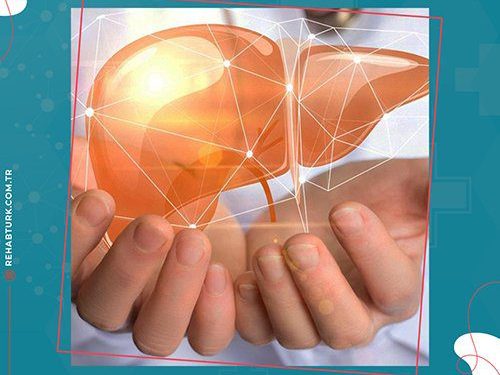Liver cancer treatment in Türkiye
Liver cancer treatment . Depends on:
- The number, size, and location of tumors in the liver
- How well the liver is working
- Whether cirrhosis is present
- Whether the tumor has spread to other organs
What is liver cancer?
Hepatocellular carcinoma is cancer that affects the liver. It is the largest glandular organ in the human body and performs many vital functions to keep the body free of toxins and harmful substances. The liver is located in the right upper quadrant of the abdomen, just below the ribs. The liver is responsible for producing bile , a substance that helps digest fats, vitamins, and other nutrients. This vital organ also stores nutrients such as glucose, so that the body stays nourished during times when food is not being eaten. It also breaks down medications and toxins. When cancer develops in the liver, it destroys liver cells and interferes with the liver’s ability to function normally.
Liver cancer is generally classified as primary or secondary. Where primary liver cancer begins in the cells of the liver. Secondary liver cancer occurs when cancer cells from another organ spread to the liver. And unlike other cells in the body, cancer cells can break away from the initial site, or the place where they started. The cells travel to other areas of the body through the bloodstream or lymphatic system. Cancer cells eventually collect in another part of the body and begin to grow there.
What are the different types of primary liver cancer?
The different types of primary liver cancer arise from the different cells that make up the liver. Primary liver cancer can start as a single mass that grows in the liver, or it can start in many places within the liver at the same time. People with severe liver damage are more likely to develop cancer in multiple sites. The main types of primary liver cancer are:
Hepatocellular carcinoma

Hepatocellular carcinoma (HCC), also known as hepatocellular carcinoma, is the most common type of liver cancer, accounting for 75% of all liver cancers. This condition develops in “hepatocytes,” which are the dominant liver cells. It can spread from the liver to other parts of the body, such as the pancreas, intestines, and stomach. HCC is more likely to occur in people who have severe liver damage from alcohol use.
Cholangiocarcinoma
Cholangiocarcinoma, more commonly known as cholangiocarcinoma, develops in the small, tube-like bile vessels in the liver. These ducts carry bile to the gallbladder to aid in digestion. Biliary tract cancer accounts for about 10 to 20% of all liver cancers.
When cancer occurs in the ducts within the liver, it is called intrahepatic cholangiocarcinoma. When it occurs in the ducts outside the liver, it is called extrahepatic cholangiocarcinoma.
liver sarcoma
Sarcoma is a rare type of liver cancer that begins in the blood vessels of the liver. This type of cancer tends to progress very quickly, so it is usually diagnosed at a more advanced stage.
Hepatoblastoma
Hepatoblastoma is an extremely rare type of liver cancer. It is more often found in children, especially those under 3 years of age. With surgery and chemotherapy, the outlook for people with this type of cancer can be very good. When hepatoblastoma is caught in the early stages, the survival rate is above 90%.
What are the symptoms of liver cancer?
Many people do not experience symptoms in the early stages of primary liver cancer. When symptoms do appear, they may include:
- Abdominal discomfort and pain
- Yellowing of the skin and the whites of the eyes, which is called jaundice
- chalky white stools
- nausea
- vomiting
- easy bruising or bleeding;
- weakness
- fatigue
Who is at risk of developing liver cancer?
Doctors aren’t sure why some people develop liver cancer while others don’t. However, there are some factors that are known to increase the risk of developing liver cancer:
- Liver cancer is more common in people over the age of 50.
- A long-term hepatitis B or C infection can seriously damage the liver. Hepatitis is transmitted from person to person through direct contact with the bodily fluids of an infected person, such as blood or semen. It may also be passed from mother to child during childbirth. The risk of contracting hepatitis B and C can be reduced by using protection during sexual intercourse. There is also a vaccine that can protect against hepatitis B.
- Drinking two or more alcoholic drinks each day over many years increases the risk of liver cancer.
- Cirrhosis is a form of liver damage in which healthy tissue is replaced by scar tissue. A scarred liver cannot function properly and may eventually lead to several complications, including liver cancer.
- Long-term alcohol use and hepatitis C are the most common causes of cirrhosis in the United States. The majority of Americans with liver cancer have cirrhosis before it develops into liver cancer
- Exposure to aflatoxin, a “fungal toxin,” is a risk factor. Aflatoxin is a toxin produced by a type of mold that can grow on peanuts, grains and corn. Food handling laws in the United States limit widespread exposure to aflatoxins. However, exposure to aflatoxin outside the country can be high.
- Diabetes and obesity are also risk factors. People with diabetes tend to be overweight or obese, which can lead to liver problems and increase the risk of liver cancer.
How is liver cancer diagnosed?
Diagnosing liver cancer begins with a medical history and physical examination. You should tell your doctor if there is a history of long-term alcohol abuse or chronic hepatitis B or C.
Diagnostic tests and procedures for liver cancer include:
- Liver function tests help determine the status of your liver by measuring the levels of proteins, liver enzymes and bilirubin in your blood.
- The presence of alpha-fetoprotein (AFP) in the blood can be a sign of liver cancer. Normally, this protein is only produced in the liver and yolk sac of babies before they are born. The production of AFP usually stops after birth.
- Abdominal CT or MRI produces detailed pictures of the liver and other organs in the abdomen. These images enable the doctor to determine the location and size of the tumor and to assess whether it has spread to other organs.
Liver biopsy
Another diagnostic test available is a liver biopsy. A liver biopsy involves removing a small piece of liver tissue. This is always done using anesthesia to prevent you from feeling any pain during the procedure.
In most cases, a needle biopsy is performed. During this procedure, your doctor inserts a thin needle through your abdomen into your liver to obtain a tissue sample. The sample is then examined under a microscope for signs of cancer.
A liver biopsy can also be done using a laparoscope, which is a thin, flexible tube with a camera attached to it. The camera allows the doctor to see the shape of the liver and perform a more accurate biopsy. The laparoscope is inserted through a small incision in the abdomen. If tissue samples from other organs are needed, the doctor will make a larger incision. This is called a laparotomy.
If liver cancer is found, the doctor will determine the stage of the cancer. The stage determines the severity or extent of the cancer. It can help the doctor determine treatment options and expectations. Stage IV is the most advanced stage of liver cancer.
How is liver cancer treated?
Liver cancer treatment. Depends on:
- The number, size, and location of tumors in the liver
- How well the liver is working
- Whether cirrhosis is present
- Whether the tumor has spread to other organs
Your treatment plan will depend on these factors. Liver cancer treatments may include:
Hepatectomy
Hepatectomy is performed to remove part or all of the liver. This surgery is usually done when the cancer is limited to the liver. Over time, the remaining healthy tissue will grow back and replace the lost part.
Liver transplant
A liver transplant involves replacing a diseased liver with a healthy liver from a suitable donor. A transplant can only be done if the cancer has not spread to other organs. Medicines that prevent body resistance to implants are given after the operation.
excision
Ablation involves using heat or an injection of ethanol to destroy cancer cells. It is performed using local anesthesia to prevent any pain. Ablation can help people who are not candidates for surgery or transplantation.
Chemotherapy
Chemotherapy, a powerful form of drug treatment that destroys cancer cells. The drugs are injected intravenously. In most cases, chemotherapy can be given as an outpatient treatment. Chemotherapy can be effective in treating liver cancer, but many people experience side effects during treatment, including vomiting, decreased appetite and chills. Chemotherapy can also increase the risk of infection.
Radiation treatment
Radiation therapy involves the use of high-energy radiation beams to kill cancer cells. It can be delivered by external radiation or internal radiation. In external beam radiation, radiation targets the abdomen and chest. Internal radiation involves using a catheter to inject small, radioactive spheres into the hepatic artery. The radiation then destroys the hepatic artery, which is the blood vessel that supplies blood to the liver. This reduces the amount of blood flowing to the tumor. When the hepatic artery is closed, the portal vein continues to supply the liver.
Targeted therapy
Targeted therapy involves the use of drugs designed to hit cancer cells where they are weak. This reduces tumor growth and helps stop blood flow to the tumor. Sorafenib (Nexavar) is approved as a targeted treatment for people with liver cancer. Targeted therapy can be beneficial for people who are not candidates for liver resection or transplant. However, targeted therapy has significant side effects.
Embolization and chemical embolization
Embolization and chemoembolization are surgical procedures. The hepatic artery is closed. The doctor uses small sponges or other particles to do this. This reduces the amount of blood flowing to the tumor.
In chemoembolization, the doctor injects chemotherapy drugs into the hepatic artery before injecting the blocking molecules. The resulting blockage keeps the chemotherapy drugs in the liver for longer.
How can I book for liver cancer treatment in Türkiye?

- Free medical support on the phone: You will have a dedicated representative for your health condition who is always ready to answer your questions.
- Free consultation with a specialist doctor: Your medical representative will consult with a number of doctors and hospitals to find the best possible treatments.
- Free travel visa arrangement: We will contact the embassy in your country to assist you in obtaining a visa to visit Türkiye.
- Free itinerary planning: We will create a schedule for your medical trip to Türkiye.
- Free translation of documents and reports: We will translate medical documents and reports into Turkish on your behalf.
- Free support and monitoring: We will monitor the stages of treatment and be by your side every step of the way.
- Free instant translation: We will be with you during the treatment stages to provide translation between you and the medical team.
- Free accommodation and transportation coordination: We will book accommodation for you and your companions in Türkiye, along with transportation services.
Contact REHABTÜRK doctors for more information about the procedure and to evaluate your medical condition.
